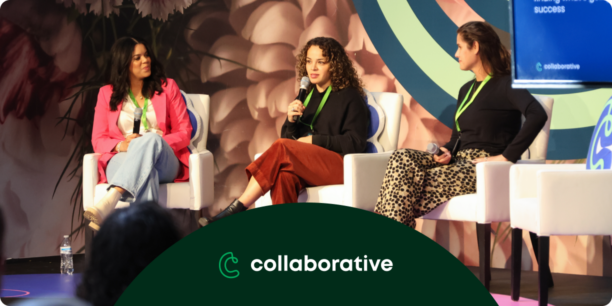10 Ways to Host the Ultimate Donor Appreciation Event

Imagine creating an unforgettable experience for your top-tier prospects, where generosity takes center stage instead of ticket sales or donations. Picture an exclusive gathering that sparks interest, breathing new life into your existing donor list.
This special occasion is known as a cultivation event, a valuable opportunity to showcase your organization’s mission and needs creatively, without directly soliciting donations.
A cultivation event unfolds in a relaxed and enjoyable atmosphere, often in the form of a house party or cocktail reception. It allows for meaningful interactions centered around your mission, leaving guests emotionally gratified and more invested in your cause.
Turning Fundraising Into Celebration: Key Elements for a Successful Donor Appreciation Event
Attendees include your leadership team, volunteers, board members, staff, and a client whose life has been positively impacted by your organization.
The goal is to create an environment that feels like a party rather than a fundraising event, sharing your impact and initiating conversations comfortably and naturally. By doing so, your donors will depart feeling emotionally fulfilled and deeply connected to your mission.
A well-planned cultivation event holds immense power as a nonprofit marketing tool. Not only can it secure major gifts, but it also nurtures a stronger bond between your organization and its most significant donors.
During a session at the BBCON philanthropic conference, Penelope Burke, the esteemed author of “Donor-Centered Fundraising” and “Donor-Centered Leadership,” highlighted compelling research findings:¹
- Donors who attended donor cultivation events rated their satisfaction level between 5 and 7 on a scale of 1 to 7.
- A remarkable 33 percent of event attendees made unsolicited gifts.
- 35 percent of solicited donors who made a gift attributed their decision to the event.
To help you plan and host a successful cultivation event, here are our top ten donor appreciation event ideas:
1. Get the Details Right
Once you have set the date for your cultivation event, mark it on your company calendar and secure a venue. Establish the start time and create a project timeline outlining the necessary steps leading up to the event. As you finalize the specifics, take these additional steps:
- Book special guests well in advance, such as a client with a compelling success story.
- Determine the roles of staff, volunteers, and your nonprofit board members.
- Confirm the attendance of all invitees as they RSVP.
Remember that the response rate for events can be modest, typically ranging from 10 to 30 percent. To ensure a robust turnout, invite more people than you expect to attend your cultivation event.
2. Transform Your Event Into a Celebration
Your donors anticipate a fun and enjoyable experience without feeling obligated to give. Remember, thanking donors should be the primary focus of this event.
A cultivation event offers an opportunity for engaging, meaningful conversations that are light-hearted and relaxed. Your aim is to create an atmosphere where guests feel comfortable, deepening their connection with your nonprofit organization and naturally inspiring them to contribute.
The simple word “party” can transform your event entirely. The term carries a more inviting and relaxed connotation, which may entice more donors to attend. Use “party” instead of “event” in your invitations, email communications, and marketing materials when describing your gathering.
3. Curate an Exceptional Experience
A cultivation event is an extension of your nonprofit brand, which is why you want a keen attention to the details. Your invitees likely have deep pockets and are used to attending lavish events and gatherings. Ensure your event appeals to their expectations while remaining mindful of your budget.
It’s vital that your event reflects your organization’s personality and culture. For example, if your nonprofit is based in California and supports children’s orphanages in Mexico, consider having a taco stand with high-quality meals. Encourage your staff to assist with serving to engage in personal conversations with guests.
Pro tip: Encourage your staff to help with serving so they are in a position to strike up personal conversations with guests.
4. Surprise and Delight
Create moments of surprise and delight throughout the event to make it truly memorable for your donor base. These unexpected elements can leave a lasting impression and deepen their emotional connection to your nonprofit organization.
Consider incorporating unique and interactive entertainment options that align with your cause or theme. For example, you could invite a local artist to create live artwork during the event or organize a short performance by individuals who have directly benefited from your organization’s programs. These unexpected elements can engage and captivate your donors, making the event more memorable.
Another idea could be preparing personalized tokens of appreciation for each donor attending the event. These can be small gifts, such as customized keychains, bookmarks, or handwritten inspirational notes. The personal touch demonstrates your attention to detail and reinforces the appreciation you have for their support.
By incorporating surprise elements, you can elevate your donor appreciation event to new heights and create a truly exceptional experience for your supporters.
5. Showcase Collaborative Achievements
Highlight the collaborative achievements made possible by the partnership between your organization and its donors. This approach not only recognizes the impact of their contributions but also emphasizes the collective effort. You can do this through:
- An Impact Wall. Create a donor recognition wall or display area at the event where you can showcase photos, stories, and tangible results of projects or initiatives that were made possible by donor support. Use visual elements such as infographics or videos to effectively communicate the progress and achievements. Encourage donors to interact with the display to learn more, ask questions, and share their thoughts.
- Collaborative Presentations. Incorporate collaborative presentations or panel discussions into the event program. Invite beneficiaries, staff members, and donors to share their experiences, perspectives, and success stories. This allows donors to witness the direct impact of their contributions and fosters a sense of pride and connection to the outcomes.
6. Engage Your Board Members
Involve your board members actively in your cultivation event. Give them an official welcome role, making them the first faces donors see upon arrival. Additionally, they can introduce guests to one another, stimulating conversations, and engage with those who may be more reserved.
Consider assigning board members to converse with high-profile guests during the event. Encourage them to initiate casual discussions, such as asking for initial impressions of your organization. Avoid any direct requests for donations; instead, focus on genuinely getting to know individuals while sharing important information about your nonprofit.
Pro tip: Highlight your board members by assigning them a color-coded name tag to differentiate them from other guests.
7. Prioritize Your Guest List
While all of your guests that will attend your cultivation event serve a purpose, there will undoubtedly be some guests that are on your V.I.P. list.
These very important people may include:
- Long-term donors
- Donors with deep pockets
- People you are cultivating for a future gift
These priority guests should not only be paid special attention but there should also be a plan on how to engage them. Prior to the cultivation event, find out who they are, why they are coming, and any background information that could be used as a conversation starter, such as a hobby they are interested in. Assign these prospects to your staff and board members so they make it a point to talk to them throughout the evening.
8. Determine Your Budget
Incorporate cultivation events into your annual nonprofit budget to determine the allocated funds accurately. Consider the following costs when planning your event:
- Food and drink — Catering, open bar, appetizers
Money saver: Purchase your alcohol from a local grocery store.
- Food and drink — Catering, open bar, appetizers
- Venue — Space rental fees
Money saver: Hold the event at a board member’s house.
- Venue — Space rental fees
- Flowers — Hiring a florist to create and deliver center-pieces
Money saver: Pick up ready-made bouquets at the grocery store or from a local florist.
- Flowers — Hiring a florist to create and deliver center-pieces
- Equipment Rental — Extra chairs, tables
Money saver: Skip the chair covers.
- Equipment Rental — Extra chairs, tables
- Entertainment — You may need to pay for or provide travel expenses for special guests
Money saver: Hire local talent.
- Entertainment — You may need to pay for or provide travel expenses for special guests
- Graphic Design — Invitations, marketing materials, pamphlets
Money saver: If your office has the technology and staff, design in house.
- Graphic Design — Invitations, marketing materials, pamphlets
- Printing/materials — Professional printing costs for banners, signs, posters, marketing collateral, activities.
Money saver: Print what you can using your own office printer and save the bigger projects for a professional.
- Printing/materials — Professional printing costs for banners, signs, posters, marketing collateral, activities.
9. Bring the Wow Factor
The day of your cultivation event has finally arrived, and your guests are eager to mingle with one another and your staff. Avoid keeping them waiting by opening the doors 15 minutes before the official start time for early birds.
Strategically position your board members to be the first people guests see upon entering. Set up a welcome table with guest name tags, and have staff or board members stationed there as well.
Appoint a single point person (which could be you) to oversee the smooth running of the event. The primary objective is to make your guests feel special and to express gratitude. Consider the following tips to achieve this:
- Personally welcome each individual donor as they collect their name tag and check in.
- Ensure key staff members and board members engage and mingle with donors throughout the event.
- Keep food and drinks fully stocked and readily available.
- Capture photos during the event, which can be used in future marketing materials, email newsletters, social media posts, and office bulletin boards to inspire and motivate employees.
- Assign an employee to be the timekeeper, ensuring the event adheres to the schedule.
- Pay attention to small details, such as ensuring there are enough seats for all guests during speaker presentations, providing pamphlets about your organization to each guest, and confirming the functionality of microphones before the event begins.
10. Follow Up With Attendees
Within a week of your cultivation event, send a thank-you letter to each person who attended, whether they made a donation or not. By promptly thanking your attendees you are not only being polite, but also cultivating the relationship you established at the event. This is also another opportunity to communicate and connect with your current and prospective donors.
Germaine Frechette of Great Blue Hill (GBH) says, “Most people don’t expect event follow up, so you have an opportunity to stand out among other organizations. Perhaps you have an attractive photo of the donor at the event—this is always a great reason to write and say, ‘Thanks for attending, great to meet you and here’s a nice memory.’”
Even no-shows should be sent follow-up letters. This is an opportunity to develop a relationship that could result in attendance at your next event or even a donation. Tell your no shows you are sorry they weren’t able to make it, give a brief event recap, include any pertinent materials handed out at the event, and say you hope to see them at the next one.
Ultimately, the goal should be to get to know your donors on a more personal level. This kind of relationship is what builds trust and deeper donor loyalty. Frechette adds,
Meaningful events keep the conversation going between the organization and its supporters. Like any relationship, the more you engage with someone, the more you learn about what motivates them into action.
Count on Classy
With Classy’s supercharged platform and tools, your nonprofit can throw the party of the year, leaving donors in awe and ready to support your cause. It’s all about creating an unforgettable experience that’s equal parts fun, engaging, and heartfelt. Classy brings the tech-savvy magic that amps up event planning while ensuring smooth operations.
So, grab your dancing shoes, prepare to mingle, and let Classy be your partner in nonprofit partying. Together, we’ll help elevate your donor management initiatives and make a lasting impact on your mission.
Cheers to unforgettable events and changing the world, Classy style!
Article Sources
- Burk, Penelope. Donor-Centered Leadership. 1st ed., Cygnus Applied Research, 2003.

Your 10-Week Social Media Event Promotion Plan



